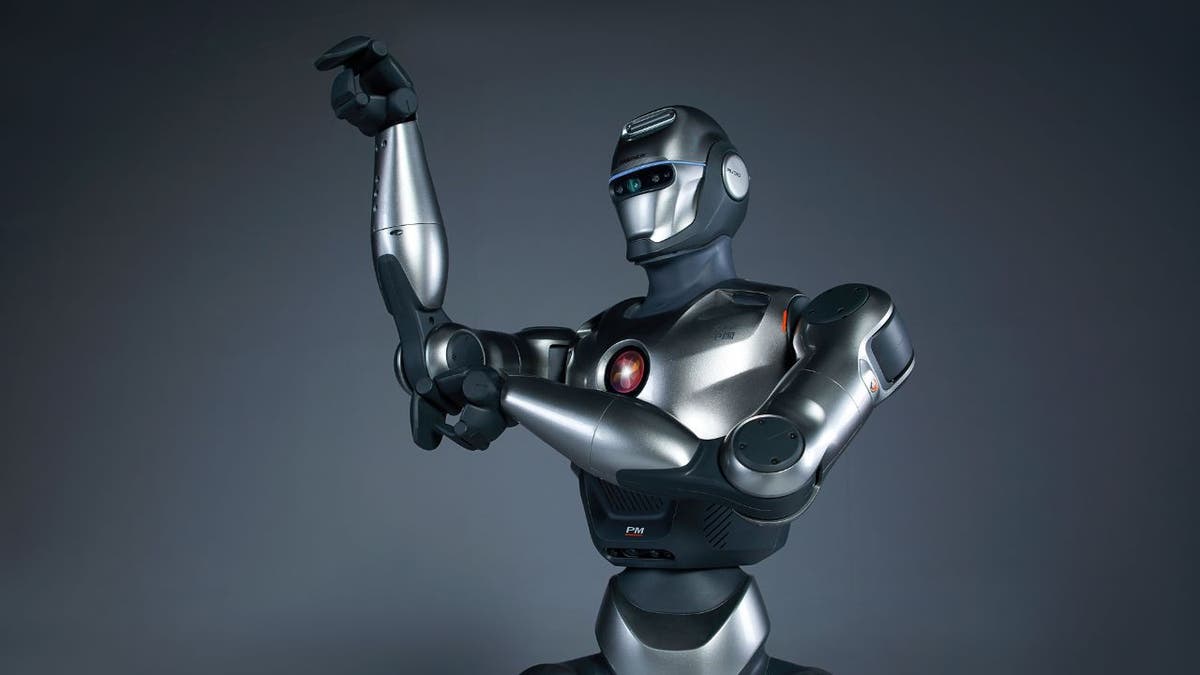
EngineAI’s PM01: A Front-Flipping Leap into the Future of Humanoid Robotics
Chinese robotics company Zhongqing Robotics, operating under the name EngineAI, has significantly raised the bar in humanoid robotics with the unveiling of its PM01 robot. The company has released a compelling video demonstrating what it boldly claims is the world’s first successful front flip performed by a humanoid robot. While robot backflips have become increasingly common demonstrations of advanced motor control, the execution of a front flip presents a significantly more complex challenge, as any seasoned gymnast will readily confirm.
The primary difficulty for robots attempting a front flip lies in the critical need to maintain precise balance and unwavering control throughout the entire rotational maneuver. Unlike humans, who rely on a combination of instinct, experience, and subtle adjustments to maintain equilibrium, robots are entirely dependent on meticulously calibrated sensor data and sophisticated motor control systems to execute complex movements. During a front flip, the robot must rapidly and accurately shift its weight distribution, constantly adjust its center of gravity in real-time, and precisely coordinate the intricate movements of each limb to ensure a smooth, controlled, and, most importantly, safe landing.
EngineAI has seemingly overcome this monumental challenge by meticulously programming its PM01 robot to generate the precise amount of force required to initiate and sustain the forward spin. This process involves intricate calculations of angular velocity, torque, and trajectory, all performed in fractions of a second. The accomplishment highlights the remarkable advancements in robotics engineering and the increasing sophistication of control algorithms.
However, it’s important to acknowledge a fundamental difference between a robot and a human performing such a feat. A robot, inherently, lacks the concepts of fear, hesitation, or self-preservation. Its designers can equip it with an array of powerful electric motors and highly engineered joints. The robot is then meticulously programmed and explicitly instructed to perform the flip. While this distinction might seem to diminish the achievement, it underscores the precision and control that engineers have achieved.
Despite this inherent advantage, the achievement is still undeniably impressive. The field of robotics, particularly the development of humanoid, general-purpose robots, is progressing at an astounding pace. Just a decade ago, such a demonstration of agility and control would have been considered firmly within the realm of science fiction. Now, the PM01 robot is available for purchase, as an open-source platform, directly from EngineAI’s website for approximately $13,700.
The PM01 boasts a respectable set of specifications, including five degrees of freedom in each arm and six degrees of freedom in each leg, resulting in a total of 23 degrees of freedom across the entire body. This allows for a wide range of motion and articulation. Furthermore, the robot is equipped with actuators capable of generating an impressive 221 lb-ft of torque (300 Nm). This is a significant amount of power considering the robot’s relatively compact size, standing at just 4.5 feet tall and weighing approximately 88 pounds. Beyond the front flip, the EngineAI PM01 also demonstrates a remarkably human-like gait, further showcasing the strides made in achieving natural and fluid movement in humanoid robots.
According to EngineAI, the PM01 is a new-generation, open-source humanoid robot designed with a focus on both aesthetics and dynamic mechanical performance. It is built around a collaborative ecosystem and powered by a dual-chip architecture featuring an Intel N97 processor paired with an NVIDIA Jetson Orin module. This powerful combination allows for sophisticated motion control, training, and deployment capabilities, supporting both X86 and Orin platforms.
The PM01 is also equipped with a depth camera, specifically the Intel RealSense D435i, which provides valuable environmental data for navigation and object recognition. A multi-array microphone system ensures clear audio input for voice commands and interaction. Furthermore, an interactive core display provides a multidimensional smart interaction experience for the user.
EngineAI has paid careful attention to the robot’s design, including features such as a high degree of flexibility at the waist, allowing for a 320-degree range of rotation. The internal wiring is routed through hollow joints, which contributes to a lightweight design while maintaining high durability and overall reliability. Each leg incorporates six degrees of freedom, distributed across three hip joints, one knee joint, and two ankle joints, mimicking the complex articulation of a human leg.
To further enhance the user experience, the PM01 features surround-sound 3D speakers designed to mimic the directionality of human voice. A high-capacity, quick-release battery provides 10,000mAh of power for extended operation and allows for rapid battery swapping to minimize downtime.
The PM01’s core motion module is capable of generating a maximum joint torque of 300 N·m, achieving a peak torque density of 203 N·m/kg. This allows for impressive mobility, including a walking speed of 2 m/s, all while maintaining a natural, human-like gait.
The unveiling of EngineAI’s front-flipping PM01 robot underscores the rapid advancements occurring in the field of robotics. The ingenuity and innovation demonstrated in this achievement are undeniable. It prompts reflection on the potential capabilities of robots in the near future.
The question that arises is how important realistic movement is for the acceptance and successful integration of humanoid robots into our daily lives. If robots are to function alongside humans in various roles, the more natural and intuitive their movements become, the more readily humans are likely to accept them.
